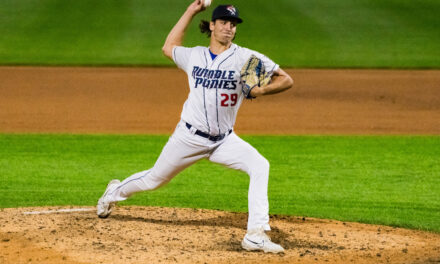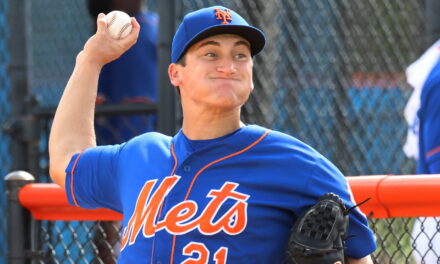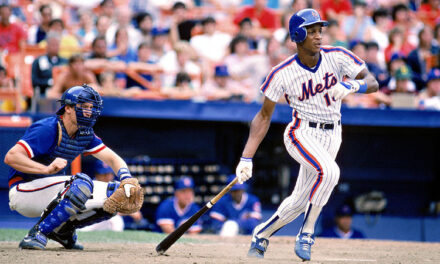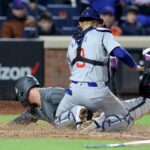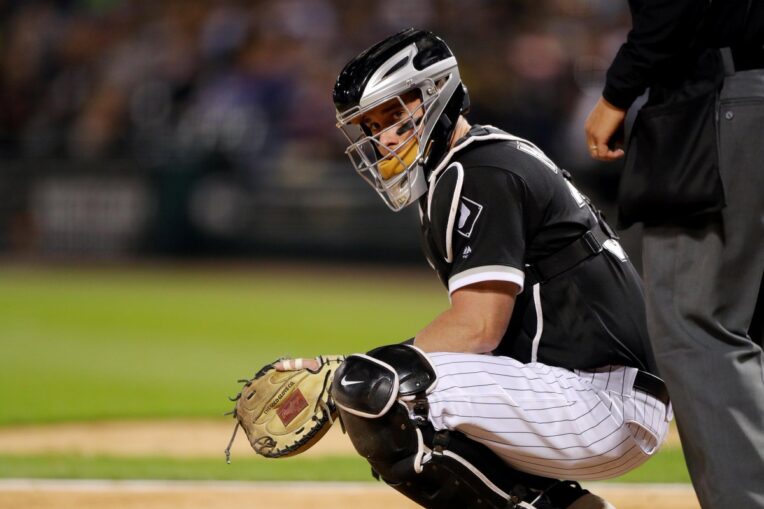
Entering the 2020 offseason, one of the biggest priorities the New York Mets needed to address was their vacancy at the catching position.
The club was in clear need of upgrading defensively behind the plate, as Wilson Ramos recorded a combined DRS of -12 from 2019-20 (127th out of 134 catchers) while posting the second-worst FRM (FanGraphs’ framing metric) among 19 catchers who caught a minimum 1,000 innings in that span at -8.3.
Ramos’ strike rate under Baseball Savant’s catcher framing metric also paints Ramos as a below-average framer, as he fell well under the league average strike rate in both the 2019 and 2020 seasons.
Looking at the free agent catching market, two names quickly stood out as potential replacements and upgrades to succeed the Buffalo: J.T. Realmuto and James McCann.
The former established himself as the best catcher in the sport as a force on both sides of the ball. Since 2017, Realmuto has recorded the highest fWAR among catchers (16.8) and has seen improvement each year in his framework behind the dish (39th percentile, 59th percentile, 68th percentile, and 95th percentile according to Baseball Savant).
With Realmuto entering the offseason as one of the premier free agents available, Mets officials came away from their conversations with his camp that he wasn’t going to sign until later in the offseason, which ended up being the case.
The Mets were left with a choice of waiting out Realmuto in hopes of securing him to a long-term deal while taking the risk of losing out on both catchers, or taking more immediate action on a player like McCann.
The club decided to act swiftly and agreed to a four-year, $40.6 million deal with McCann in early December. The Mets were intrigued with McCann’s offensive and defensive improvements over the last two seasons, with team president Sandy Alderson expressing optimism that McCann’s defensive refinement during the truncated 2020 season wasn’t just noise.
“I don’t think it’s serendipitous, if you will,” Alderson said. “I think it’s more a function of his work ethic and his awareness of what he needs to do to get better.”
In McCann, the Mets are hoping the right-handed hitting catcher can continue to improve upon the changes he’s made over the last two seasons. Once a promising catching prospect with the Detroit Tigers (drafted in the second round of the 2011 MLB Draft), McCann, 30, was non-tendered by the club following a down 2018 season in which he saw a drop of more than 150 points in OPS from the previous season.
That proved to be a turning point for the California native, as McCann signed a one-year deal with the Chicago White Sox in December 2018. McCann made some mechanical adjustments at the plate, including opening his stance up and lowering his hands on the bat, and saw noticeable jumps in his average exit velocity (87.8 mph in ’18, to 90.2 mph in ’19), hard-hit % (37.4 percent in ’18, to 44.2 percent in ’19), and more than doubled his home run output from the year before (eight to 18).
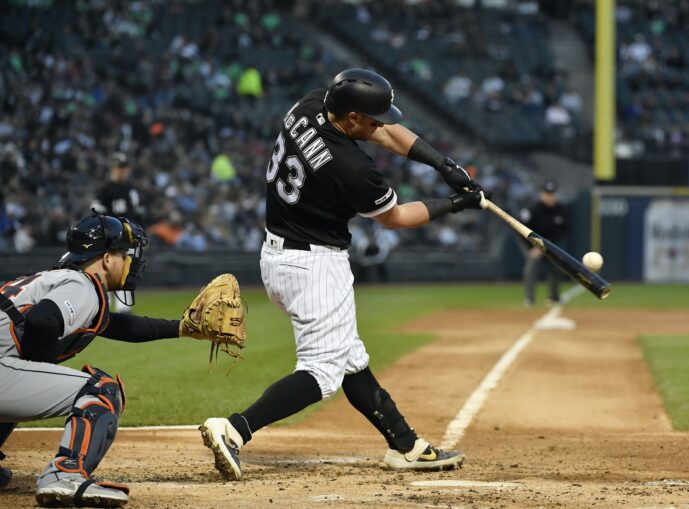
While McCann took some leaps offensively in 2019, making his first All-Star game and posting career highs in home runs (18), RBI (60), and wRC+ (108), his defense needed some work. While his DRS was +4 in ’19, his framing metrics left much to be desired.
According to Baseball Savant, he was -15 in Runs From Extra Strikes, which converts strikes to runs saved on a .125 run/strike basis, and includes park and pitcher adjustments. That was the worst mark among qualified catchers that season. Among 37 catchers who played in a minimum 500.0 innings in ’19, McCann ranked 35th in FanGraphs’ framing metric at -9.0.
Not satisfied with the results, McCann knew that he needed to improve on his framing, particularly low in the zone. Through his agent, he enlisted the help of former big league catcher and manager Jerry Narron for tutelage. Narron worked with McCann on his setup and staying below the baseball among other things, and has continued to be someone McCann counted throughout the 2020 season while Narron was serving as the Boston Red Sox’ bench coach.
In 2020, McCann saw marked improvements in his framing metrics. His strike rate increased over six percent from 2019 (45.0% to 51.4%) and his framing down in the zone drastically improved.
Looking at zones 17, 18, and 19 in what’s referred to as the shadow zone (essentially the edges of the strike zone, roughly one ball width inside and one ball wide outside of the zone), McCann saw the following improvements:
Zone 17 – 2019: 20.3%, 2020: 38.1%
Zone 18 – 2019: 44.1%, 2020: 61.8%
Zone 19 – 2019: 13.9%, 2020: 31.3%
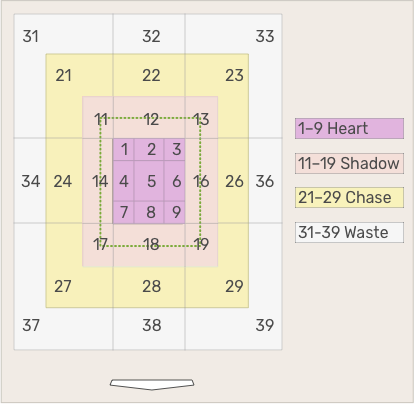
Baseball Savant
Much of McCann’s framing improvements low in the zone can be credited to the setup he and Narron discussed and worked on over the offseason.
Here’s a still of McCann from 2019:
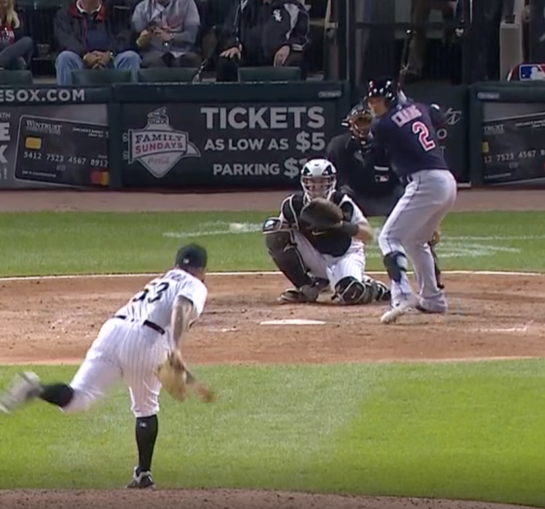
Baseball Savant
Notice he’s got his left knee on the ground while his right is bent close to his body, keeping him more upright in position.
Now check out McCann in 2020 after working with Narron:
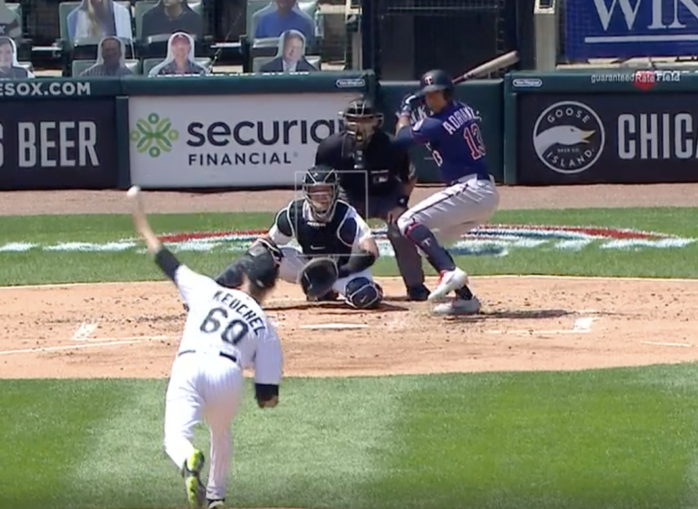
Baseball Savant
Here he is with a much wider spread, allowing him to get a lower angle and be able to catch pitches without having to stab at them to make them appear lower than they actually are.
The Mets are counting on McCann’s continued improvements on both sides of the ball as they embark on a new chapter in the organization’s history.
I had the privilege of speaking to the new Mets catcher where we discussed overcoming obstacles, his work with Narron, and signing with the Mets.
MMO: Who were some of your favorite players growing up?
McCann: The first one that comes to mind would be Vladimir Guerrero. I think I was eight years old and he was still with the Expos and was playing down in Arizona. During batting practice, I was down in right field and he was doing some work and he pointed up to me in the stands and made all of the adults get out of my way and threw me a ball.
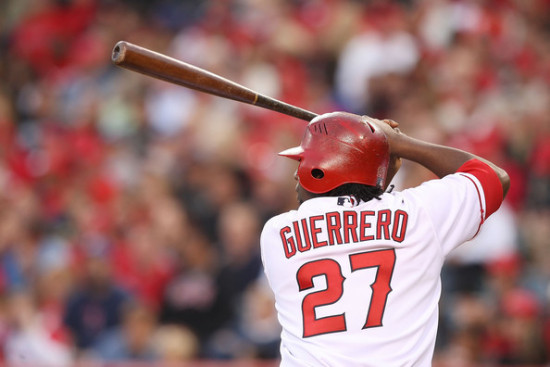
From that moment on I was a huge Vladimir Guerrero fan, especially when he came over to the Angels because I grew up in Southern California. Getting to watch him play for the Angels was kind of a surreal thing for me as a huge baseball fan.
MMO: Something I read was that your parents were told there was a one-in-four chance of you surviving birth due to a tear in your mother’s amniotic sac early in pregnancy, and that doctors advised that even if you made it there would likely be developmental challenges.
Looking back, can you put into perspective coming from a terrifying prognosis like that, to now entering your eighth year in the major leagues?
McCann: One of the things I’m a big believer in is that God gives you a story and gives you that testimony to share with other people that might be in a similar type of situation. The fact that I have a platform like Major League Baseball to share my story from and just kind of share what I’ve been through in my life hopefully has an impact on other people for the greater good. It just goes to show that anything is possible, and God has a plan for each of us.
MMO: At what point during your development did you start specifically honing in on catching?
McCann: In Little League I definitely played all over the field and early on in my high school career I was shortstop, third base, and caught a little bit here and there. It was really my junior year of high school going into my senior year that I started catching full time.
At that point, it was still kind of catch and do what I watched Major League Baseball players do. I never had a coach teach me one thing per se, and it was in college that I really started to learn the position and learn how to call a game and manage the staff and everything that being a catcher entails. So, it was really in college that I started honing in on all that it takes to be a catcher.
MMO: You were originally selected by the Chicago White Sox in the 31st round back in the 2008 MLB Draft, and instead attended the University of Arkansas where you were drafted by the Detroit Tigers in the second round in 2011. What did attending Arkansas do for your player development, and what are your memories from the 2011 Draft?
McCann: Going to college for me was key to really becoming a man and coming into my own. Coming out of high school I was just a boy in the sense that I really didn’t know what I was doing playing baseball; I was just playing baseball.
Going to college I learned to hone my craft in catching, learned really how a swing works and how to hit at a high level. But like I said, the biggest thing for college was just becoming a man and learning from coaches and other players who obviously had more experience and more knowledge than I did.
The 2011 Draft was a dream come true to hear your name called in an MLB Draft. Just the process of signing and going to pro ball and then working your way up through the minor leagues are things you take for granted because it isn’t an easy process. But looking back on it, it was a dream come true.
MMO: Being non-tendered by the Tigers after the 2018 season must’ve been tough at the time, though, you started to break out and excel at the plate once you signed with the White Sox. Can you talk a bit about your thoughts and reactions when you were initially non-tendered, and how that ended up working out for you in the long run?
McCann: Just like my birth story, things happen for a reason. I’m a big believer that God has a plan and that was part of His plan. I had a down year in 2018 and going into the offseason, months before I was non-tendered, I knew that I needed to make changes and that’s what I spent the offseason doing.
I made adjustments at the plate; you can go look at side-by-side pictures of me hitting in 2018 vs. me hitting in 2019 and in ’18 I was more upright, my hands were higher, I wasn’t in my legs as much and my stance was even. And then you look at me in 2019 and I’m more in my legs and I actually have an open stance; my hands were a little bit lower and I was more relaxed as a hitter.
Those were just some changes that I knew I needed to make to be me. And really that’s the overall theme I took away from when I was non-tendered was that I needed to figure out who I was as a player and be content with who I was and not try and be someone that I wasn’t.
MMO: You mentioned some of the mechanical changes you made at the plate from 2018 to 2019, and clearly your adjustments paid off as your average exit velocity increased by almost three miles per hour, your hard-hit rate increased by nearly seven percent, and you more than doubled your home run total. Can you expand a bit on what you worked on and what your approach was at the plate?
McCann: Honestly, where it all started, was just my approach and being content with who James McCann was. As much of a blessing it was to come up in Detroit playing with guys like Miguel Cabrera, J.D. Martinez, Victor Martinez, [Yoenis] Céspedes, and all of these phenomenal hitters, it was also a curse in the sense that I caught myself trying to be like them and doing the things that they did. Miguel Cabrera is a once in a generation talent, you can’t be Miguel Cabrera. You can take certain things from him, but you can’t be him.
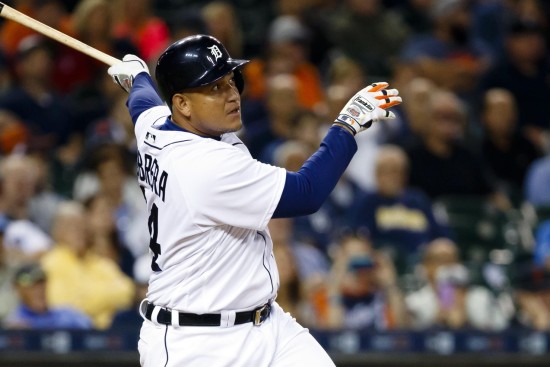
From an approach and understanding who I was, I had to be content with taking pitches the other way for line-drive singles that a guy like him might hit out of the ballpark. What that did for me was it got me more relaxed, less effort, and the next thing you know those line-drive singles turned into doubles and turned into homers, and I really learned a lot about how a swing is supposed to work because I was content being me and not trying to do something that wasn’t necessarily in my capabilities of doing.
MMO: Another big piece of your development came on the defensive side when you worked with former big league catcher and manager Jerry Narron after the 2019 season. Can you talk about what you and Narron worked on in particular, and how did you initially get in touch with him?
McCann: I never really had a catching coach in the major leagues per se, that sat down with me and showed me how the framing numbers worked or why I wasn’t getting a certain pitch called for a strike. So, after the 2019 season and ranking near the bottom [in terms of framing], I said I need to reach out and get some outside help to know why I’m ranking where I am.
I reached out to Jerry Narron through my agent who had a connection, and the first thing he said was, “It has nothing to do with your ability or talent, it has everything to do with your setup. Your target is too high and therefore any pitch that’s at the bottom of the zone the perception is that you’re going down to catch it and it makes it look lower than what it is.”
He [Narron] came in and worked, and we worked a lot on my setup, that was the first thing was my setup and staying below the baseball. The other thing on top of that was my wrist angle and not allowing the angle of my glove to change to give the umpire a better look and doesn’t deceive him in the sense of making it look lower than what it is.
Prior to 2020, I always did really well with the high pitch, but I didn’t do great on the low pitch. Making that adjustment was key for me.
MMO: How much did you work with Narron during that offseason?
McCann: We talked for about a month or so, just on and off via text and on the phone. We worked together for basically one straight day and then everything else then was via video.
We stayed in touch through spring training, quarantine, and the season where I was sending him video and he was critiquing it and helping me. He definitely became a guy that I know I can lean on and talk to about really anything.
MMO: You built a strong rapport with Lucas Giolito during your time with the White Sox. For you, what makes for a strong relationship between a pitcher and catcher, and how do you personally go about building those trusts and bonds with guys?
McCann: I think the most important thing is letting a pitcher know you care for him, first and foremost. I want to build a relationship that’s not just an on the field relationship, but a relationship where I know that he can trust me with anything. And that’s going to lead to a better relationship on the field as well.
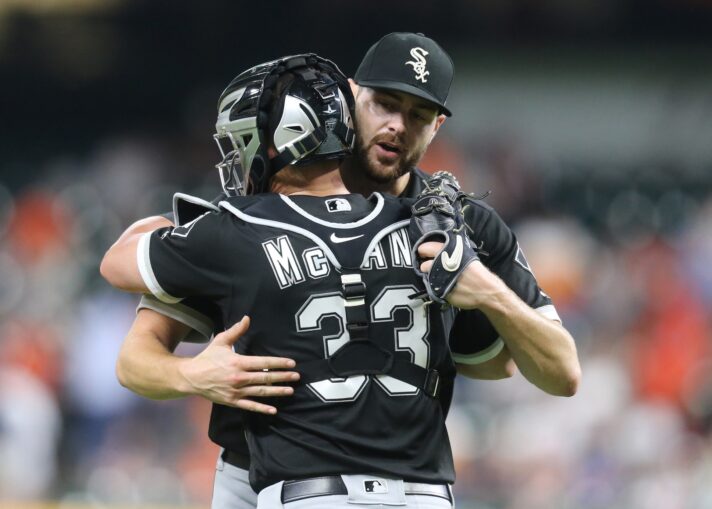
Credit: Thomas B. Shea-USA TODAY Sports
The way that you go about it is just showing guys that you care. Keeping in touch as far as what’s going on in their lives away from the field as much as what’s going on in their lives at the field. It’s easy to know when something is going well on the field or not going well on the field because all you’ve got to do is pull up the box score. It takes effort to be involved in somebody’s life and know what they have going on off the field with their kids, wife, and just everything that’s going on, just showing that you care. And then the next thing you know, with a big spot in the game, they know that you’re on the same side and on the same team and they trust you.
That’s really the big thing: I want them to be comfortable and content because at the end of the day they’re the ones that have to throw the ball and feel good, and if they don’t then we’re in a world of trouble.
MMO: How do you incorporate analytics into your game planning?
McCann: I think that the numbers and analytics are important pieces to the game, but I think that they are a baseline and a foundation for you. If you’re relying on numbers and you’re not trusting your eyes, then you’re going to become robotic. Whether that’s robotic in your swing, robotic in your pitching, robotic in your game calling, you have to trust your eyes and your instincts and go with that. But all the while using those numbers as a foundation and that baseline for how you game prep, and then once the game starts your eyes will dictate what needs to be done.
MMO: What was the 2020 season like for you dealing with the global pandemic and all of the restrictions that were put in place?
McCann: It was different. It definitely took some getting used to but at the end of it was baseball, and we got to play baseball in the middle of a pandemic and do what we love, and you make it work. Playing without fans was strange at the beginning but you get used to it. Like I said, we still got to play the game that we love and compete at a high level and hopefully soon we get fans back in the stands because they make things a lot more fun.
MMO: Talk about signing with the Mets this offseason. What attracted you to New York?
McCann: First thing is just the excitement that’s built around the Mets. The new owner Steve Cohen and what he’s brought to the table, Sandy [Alderson] coming back and the moves that are being made.
Obviously, I signed before the Lindor/Carrasco trade, but I knew that Trevor May had signed there and that things were in the works with other moves.
It’s a place that you know they’re going to be a championship team for years to come and then obviously playing in New York; there’s not a bigger stage than playing in New York and that was something that appealed to me and I’m looking forward to being part of something special with the Mets.
MMO: Thanks for taking some time to speak with Metsmerized Online today, James. Best of luck this season.
McCann: Thank you very much. Enjoyed talking with you.
Follow James McCann on Twitter, @McCannon33


